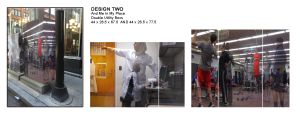#breakwallbodies
A new iteration of BREAKWALL will appear in ARTPRIZE 7, opening this week! On the occasion of our West Michigan return, I am sharing a very short back story to the work. Sometimes, simple things are not so simple.
Breakwall describes embodied memories from my childhood in West Michigan, growing up one just sand dune away from the lake in Grand Haven. It also describes my chosen role as an artist.
A break wall is comprised of cut wood pilings driven deep into the sediment under the lake. Collectively, they form a barrier against erosion. I focus on the shared responsibility of each piling. Whereas individually, they would be unable to change the course of the tide, together they maintain a foundation (even if that so called foundation is actually an accumulation of shifting sands).
I have a visceral connection to the break walls of West Michigan: I enjoyed the beaches they protect and sensed their strength while jumping from one to the next, daring the waves to catch me.
I bring those sensations into this installation and performance piece. As with my larger art practice, Breakwall emphasizes individuality within an environment of collective action. During performances, dancers activate the space with their bodies as instruments. They build a symphony of sand and wood, processed through computational software and amplified back into the installation.The performers demonstrate how this rich visual environment is a place of opportunity.
Viewers are invited to explore the sonic experience through the interface of their own bodies. What does it feel like to be the lone sound in a landscape? How are leaders born? How are movements sustained?
Breakwall is a piece about patience. It lingers.








